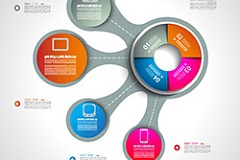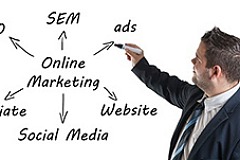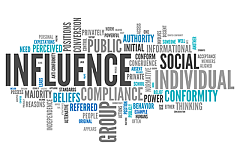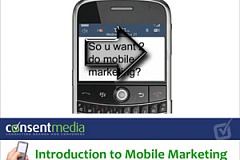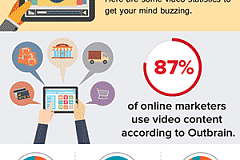As of 2023, 86 percent of brands have increased awareness via digital marketing. In the past, people generated brand awareness with huge email blasts and generic ads. But marketing in recent years is getting smarter and more individualistic.
The question today is: Have you harnessed the power of personalized marketing yet? If you haven’t, or are unsure about your strategies, this guide is for you.
What Is Personalized Marketing?
Personalized marketing isn't just inserting customers' names into email templates before the blast goes out. It's about giving every customer an individual experience of their brand based on their own wants, needs, and values.
Businesses like yours collect data via analytical tools about their audience. You might look into which demographics purchase certain products the most frequently. You may also get insights into who is visiting your webpage and which consumers generate the most conversions.
Once you collect data about your audience, you can begin to gather information about the groups of people that work with you. You'll delegate people into groups based on past purchases, pages they've lingered on, blog posts they liked on social media, and the ways that they've reached out to you before.
At this point, you'll know who wants to see what content. You can then draft different types of emails to reach out to different demographics.
Let's say that Group A has purchased a DevOps application while Group B has invested in web design services. You'll create two emails, one that relies heavily on DevOps products and pain points and another that's more focused on web design strategies. You likely will have more than two groups and more than two emails.
You can send the correct email out to the audience most interested in it. This is an effective way to better tailor your marketing efforts to different subsections of your audience. It's a good way to make people feel valued and show them the products they're most interested in.
Examples of Personalization in Digital Marketing
Email blasts are far from the only type of personalized marketing. You can give people product recommendations in messages that talk about the values and pain points that you've identified for their demographic. You can also analyze purchasing behaviors for custom video messages and direct messages (DMs) via social media.
Many companies have done a great job executing personalized marketing strategies in recent years.
Shutterfly is a prime example. When someone downloads the app and creates an account, the user gives them permission to access photos. The app puts the photos onto items on their screen that they can quickly purchase.
Amazon has also been very effective at personalized marketing over the past decade. It uses information about past purchases (and video streams) to recommend new things specifically for each user. Combined with taglines that include the customer's name, it makes a great way to get sales.
Why is it Essential to the Modern Customer Experience?
One obvious reason that personalized marketing is important is that people get to see and engage with products and services that they're interested in. Every company will have multiple target audiences and buyer personas.
These audiences will have different needs, interests, and values. You will better reach your KPIs when you show items to audiences most likely to buy them. You'll get more conversions and generate greater interest.
Customers also naturally feel more valued with personalized marketing. They'll see their name and information matched to things that interest them. They will know that your company is watching them personally to get to know them.
This makes them feel like the brand cares about their specific purchases. They're more likely to develop a connection with your brand and shop there again.
Personalized types of marketing also make people feel like they're in control. They aren't just getting the same thing as everyone else. It'll be created and tailored to them, making them feel like they're calling the shots.
The Benefits of Personalization
To understand the importance of personalized marketing, consider the following statistics:
- 76 percent of people are more likely to buy things from brands that personalize,
- 78 percent also are more likely to recognize brands that personalize marketing,
- 78 percent are more likely to make repeat purchases because of personalization,
- 71 percent of consumers expect personalized interactions from brands,
- 76 percent of these people are frustrated when they don't get them, and
- 72 percent of shoppers expect brands to be individually recognized by brands.
If you fail to personalize, you don't just fail to give consumers what they want – you fail to give them what they expect. This makes sense when you consider that there are several ways that personalization enhances modern customer experiences.
Engagement and Feedback
If you show customers you care about them, they'll be more likely to help your business get the information you need to thrive. Ask them to fill out a comment section or a feedback form in exchange for a coupon code for their next purchase. This feedback will give you intel into your customers' interests and needs.
Better Understanding of Customers
Getting more information from customers means that you'll understand them better. You'll be able to use previous feedback to enhance the way that you communicate with people from your initial interactions. This will let you immediately personalize new leads' experiences so that you can get higher conversions more quickly.
More Shares and Visibility
People tend to share content from brands when they have a positive experience, and personalization gives that to them. They are more likely to share blog posts and product pages on social media with friends and family. Since people tend to engage with those who have similar interests, you're more likely to find new leads.
You also will likely get more online reviews. These will give new customers insight into what working with you is like. They'll feel more confident in their decision to work with your brand.
What Challenges Do Brands Face With Using Personalization?
The main difficulty that brands like yours deal with when trying to personalize marketing relates to data. You'll need to gain access to customer data in order to understand what they're most interested in. Unfortunately, people will reject permissions and cookies because of privacy concerns.
Luckily, there are ways that you can target ads and marketing efforts without freaking customers out. People want personalized experiences even if they're concerned with surveillance. You need to establish trust, get permission to track and use data, and reveal why specific people are seeing specific things.
However, the challenges don't start and stop with gathering information. You need to make sure that analytics are accurate. Outdated and irrelevant data are problematic because you'll create badly-targeted marketing campaigns that actively disinterest consumers.
You also need to segment and organize data the right way if you want to break consumers down into effective groups. If you don't, you might send specific emails, messages, and ads to the wrong people. This is a waste of time and money that will generate very few conversions.
Make sure that you learn good business leadership skills so you can assess data more accurately. You'll also need to understand how to interact with consumers to get top-notch information.
How to Implement Personalized Marketing Strategies
Once you gather and assess accurate data, you can begin implementing personalized marketing strategies. Send out personalized emails.
Make useful, informational, and meaningful opt-out forms to let people know that you care about their privacy and will protect their data. Give them quality thank-you messages when they choose to opt in.
At this point, you can start making personalized sales. Create a chat bubble on your website so they can ask questions and get suggestions in real-time. Make sure there's a real person to talk to during regular business hours and a well-programmed FAQ chatbot they can talk to outside of those timeframes.
Once you turn new visitors into leads, you'll need to nurture them. Send out follow-up emails or social media DMs.
It's especially easy to do this if you have people fill out a landing form. Entice them with a great lead magnet. You'll get more sign-ups if you offer a promotion, free trial, coupon, or complementary eBook.
When it comes to support, you'll need to give context for why they're getting offers, emails, and more. Solve their problems immediately and be communicative about how you're doing it. This will keep consumers happy so they come back for more personalized experiences.





